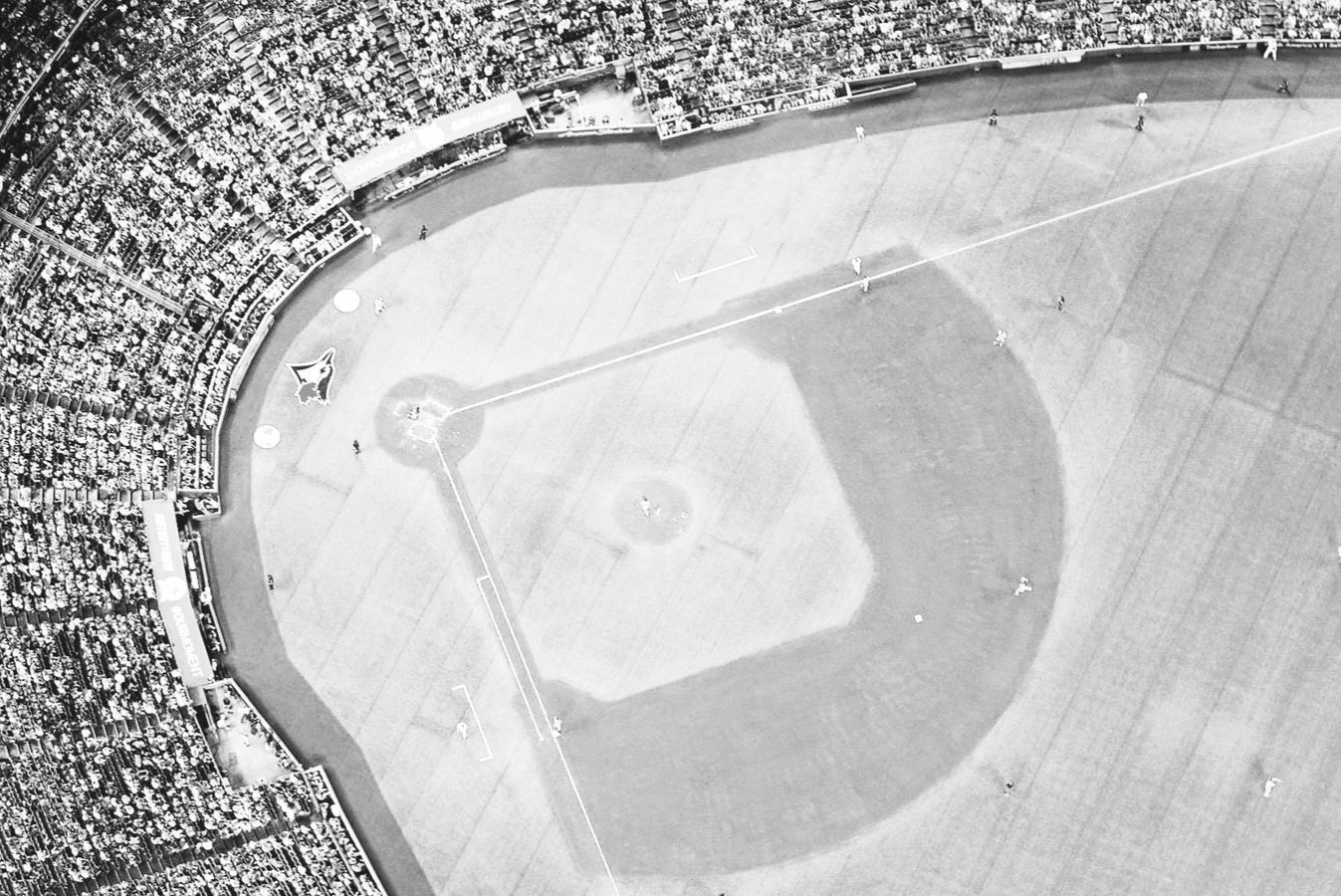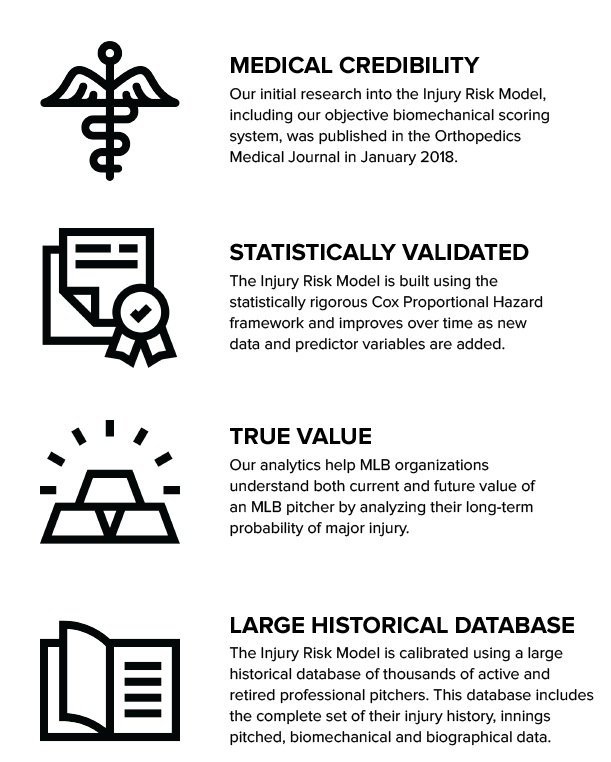DVS Analytics
“Why do some pitchers get hurt and others do not?”
There is a pandemic of injuries among pitchers, and professional organizations are spending millions of dollars on pitchers on the Injured List. This impacts the trajectory of a pitcher’s career and forces an organization to lose potential wins on the field. The DVS Analytics team is obsessed with the problem of shoulder and elbow injuries causing a shortage of reliable pitching talent in professional baseball.
The DVS Injury Risk (IR) Model is a statistically-based approach to predicting the probability of injury for a given pitcher with a significant degree of accuracy. The IR Model leverages survival analysis with objective biomechanical, injury history, usage, and biographical data as inputs from thousands of active and retired pitchers. This model is continually improving as new data and additional predictor variables are added over time.
DVS Baseball offers organizational assessments and other data products that are driven by the IR Model to help professional clubs make smarter decisions in drafting, signing, and developing players.
The Pitching Pandemic
575 Injuries
Suffered by MLB pitchers in the 2021 season.
$2.7 Billion
Lost to MLB pitchers while on the Injured List due to non-illness injuries between 2015 - 2021.
180 Seasons
Time lost by injured pitchers equates to 180 player seasons being wasted on the IL in 2021.
MLB Solutions
Our IR Model is a decision-making tool that provides an MLB organization with a current probability of major injury for a given pitcher, allowing them to assess a pitcher’s true value to the organization over various time horizons. Using the IR Model produces smarter organizational formation impacting both player acquisition and development decisions. Increase the time your pitching staff spends on the mound by leveraging this tool in your decision-making.
The DVS Analytics team offers an Organizational Assessment, as well as other data products such as reports on top draft prospects, free agent classes, and individual players of interest.
Contact us today to learn more about DVS Baseball solutions for your club or organization: info@dvsbaseball.com
How Accurate Is Our Model?
When evaluating accuracy, we look at player decision-making as a large-scale game of chance. This is how we already approach many situations in life. We adjust our attire based on a weather forecast of the percent chance of rain that day. We make decisions in a card game based on the odds of a given card being drawn from the deck. Forecasting any phenomenon in life carries with it a degree of uncertainty, but making medical forecasts tends to be even more uncertain. The approach should be to find a useful model that allows organizations to make the right decision more often by tilting the odds in their favor. If an organization commits to using the Injury Risk model, then it will make better decisions on average and allow major injuries to be significantly reduced in the aggregate.
In a Monte Carlo simulation using projections made before the start of the 2018 season, it was found that using the IR Model would have reduced the number major pitching injuries in that season for a given organization by 36% on average.
The concordance for the IR Model is 64%, which means that when comparing two pitchers the model is able to accurately predict the pitcher who will first undergo a major pitching injury 64% of the time. This is nearly 2-to-1 odds of making the right decision between two pitchers.
The overall Brier Score for the IR Model is 0.134 – meaning that it is 46% better at decision-making than flipping a coin.

IR Model Player Example
In mid-2018, the IR model identified Michael Fulmer as being “high risk,” with a 21.4% chance that he would undergo a major throwing-arm injury in his next 200 innings pitched. This put him at being nearly three times more at risk than the average pitcher. Fulmer had Tommy John surgery in March 2019. He last pitched in September 2018, about 50 innings after the forecast was made.
Major risk factors for Fulmer were his biomechanical position at foot strike and arm swing scores, as well as his major injury history.




